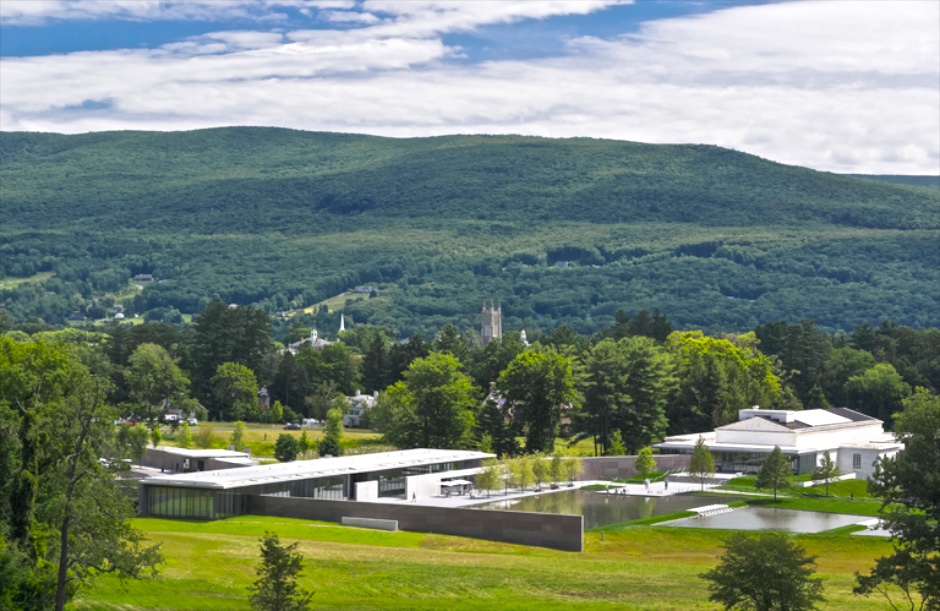
Clark Art Institute, Visitor Center, Location: Williamstown MA, Architect: Tadao Ando
Overview of the Clark campus from Stone Hill.
___________________________
 The Clark Art Institute is an unparalleled place to enjoy art and study visual culture. The Clark’s intimacy and beauty provide a unique visitor experience. The depth and accessibility of the Institute’s resources, including its collection and research library, offer an exceptional setting for scholars and curators from around the world to engage in academic pursuits. The Clark’s 140-acre campus includes scenic meadows and trails, allowing visitors to enjoy art in a setting of profound natural beauty.
The Clark Art Institute is an unparalleled place to enjoy art and study visual culture. The Clark’s intimacy and beauty provide a unique visitor experience. The depth and accessibility of the Institute’s resources, including its collection and research library, offer an exceptional setting for scholars and curators from around the world to engage in academic pursuits. The Clark’s 140-acre campus includes scenic meadows and trails, allowing visitors to enjoy art in a setting of profound natural beauty.
With a distinctive dual mission as both a museum and a center for research and higher education, the Clark houses an important permanent collection of more than 9,000 works, including exceptional European and American paintings and sculpture, extensive collections of master prints and drawings, English silver, and early photography. A particular strength is its collection of eighteenth- and nineteenth-century French art, with more than thirty paintings by Pierre-Auguste Renoir, as well as works by Claude Monet, Edgar Degas, and Camille Pissarro. The 2007 gift of the Manton Collection added significant holdings of British art, including paintings, oil sketches, watercolors, and works on paper by J.M.W. Turner, John Constable, and Thomas Gainsborough, among others. The Clark’s holdings of American paintings includes works by John Singer Sargent, George Inness, Frederic Remington and one of the world’s most important collections of Winslow Homer.
Copy & all photos courtesy Clark Art Institute. Photos by ©Jeff Goldberg/Esto, unless otherwise noted.
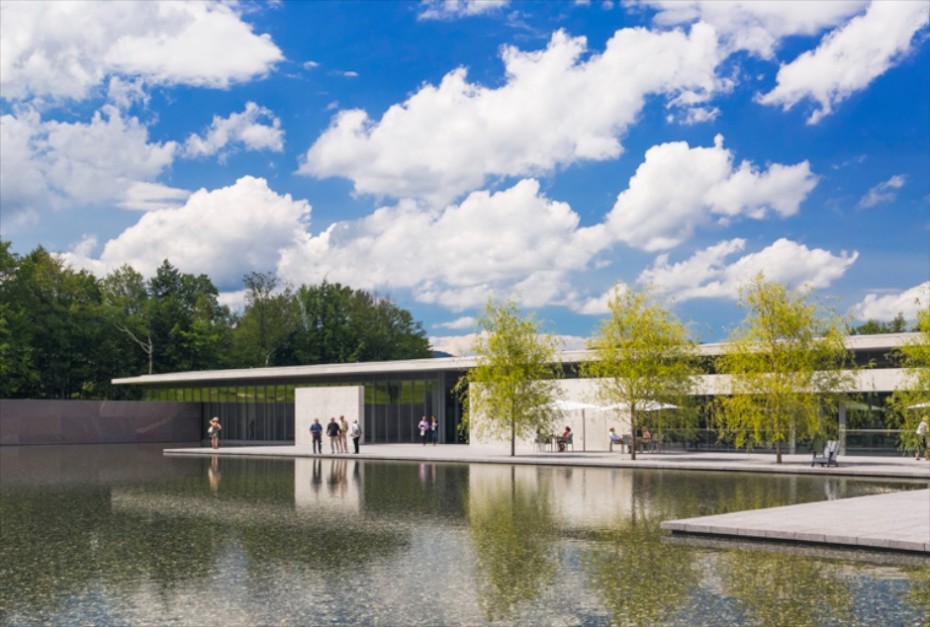
Clark Art Institute, Visitor Center, Location: Williamstown MA, Architect: Tadao Ando
CLARK ART INSTITUTE CAMPUS EXPANSION PROGRAM OVERVIEW
The Clark Art Institute opened its expanded and reconceived 140-acre campus on July 4, 2014. The multi-phase project, nearly fifteen years in the making, reconceptualizes the visitor experience of the Clark and represents the most significant transformation of the Institute since it opened in 1955.
Combining the talents of four noted architects, the project unites the new Clark Center—designed by Tadao Ando Architect & Associates, Osaka, Japan—with the renovated Museum Building and Manton Research Center designed by Selldorf Architects, New York. These buildings surround a new one-acre reflecting pool, which is the highlight of a dramatic rethinking of the Clark’s landscape of trails and walkways reconceived by Reed Hilderbrand Landscape Architecture, Cambridge, Massachusetts. Gensler, New York is the Executive Architect and sustainability consultant for all phases of the project.
The project adds more than 13,000 square feet of gallery space to the campus, supporting the Clark’s expanded collection and exhibition programs, and establishing the Institute as a leader in best practices for sustainability and energy efficiency.
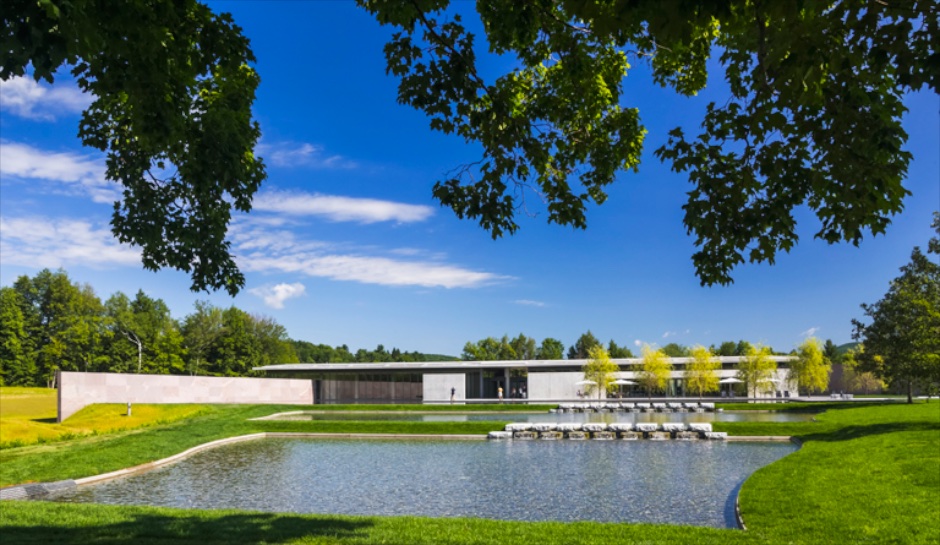
Clark Art Institute, Visitor Center, Location: Williamstown MA, Architect: Tadao Ando
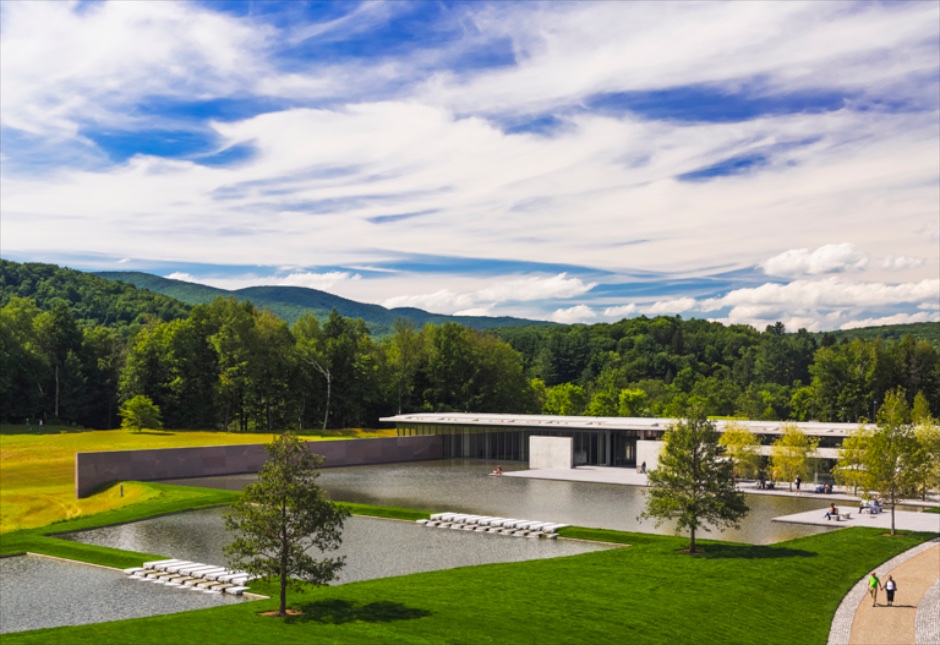
Clark Art Institute, Visitor Center, Location: Williamstown MA, Architect: Tadao Ando
~~~~~~~~~~~~~~~~~~~~~~~~~~~~~~~~~~~~~~~~~~~~~
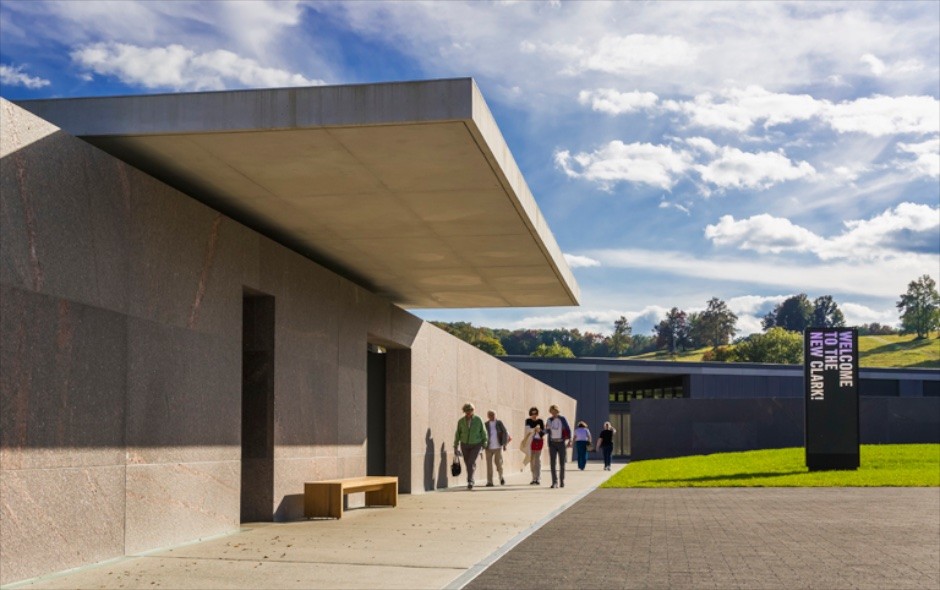
Clark Art Institute, Visitor Center, Location: Williamstown MA, Architect: Tadao Ando
“Light is the origin of all being. Light gives, with each moment, new form to being and new interrelationships to things, and architecture condenses light to its most concise being. The creation of space in architecture is simply the condensation and purification of the power of light.” — Tadao Ando
———————————————–
ELEMENTS OF THIS PHASE OF THE CLARK’S PROJECT
The new 42,600-square-foot Clark Center designed by Pritzker Prize-winning architect Tadao Ando, including more than 11,000 square feet of gallery space for special exhibitions; the Conforti Pavilion, a multi-purpose space for conferences, lectures, and events; new dining, retail, and family spaces; and an all-glass Museum Pavilion that creates a new entrance to the original Museum Building.
The expansion and renovation by Selldorf Architects of the original Museum Building, including the addition of more than 2,200 square feet of gallery space; a careful restoration of the existing galleries; installation of new lighting and environmental controls; and the re-establishment of a west-to-east orientation for the visitor.
A sweeping redesign of the Clark’s grounds by Reed Hilderbrand Landscape Architecture, which underscores the Clark’s commitment to environmental stewardship of its grounds by significantly enhancing sustainability initiatives across the campus and integrating green design practices. Key elements of the program include creation of a three-tiered reflecting pool that is both the focal point of the redesigned campus and part of an advanced water management system that reduces the Clark’s forecasted potable water consumption by approximately 50 percent, or one million gallons annually; upgrades to and expansion of walking trails; green roof systems; planting of 350 new trees on the site; and creation of a new entry drive and parking areas that feature water permeable surfaces feeding into a rainwater collection system.
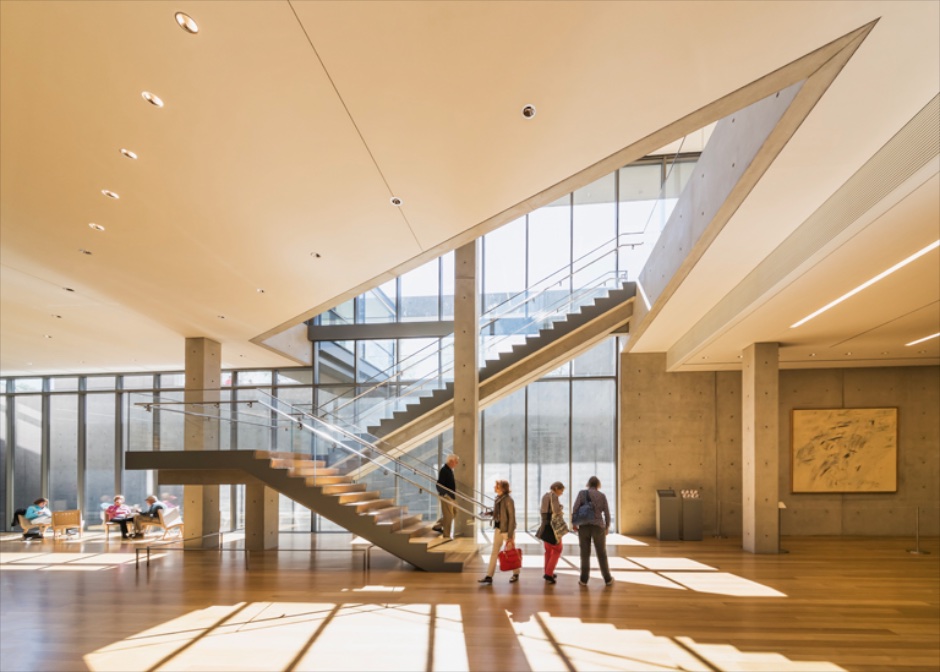
Clark Art Institute, Visitor Center, Location: Williamstown MA, Architect: Tadao Ando
The Clark’s expansion project, which began with the 2001 announcement of a master plan study by Cooper, Robertson & Partners that reconceived the campus, also included:
- Construction of the Lunder Center at Stone Hill (formerly known as Stone Hill Center) housing galleries that allow the Clark to present smaller exhibitions including non-Western and twentieth-century art; the Hunter Studio art classroom space; a seasonal terrace café; and the Williamstown Art Conservation Center’s facilities (completed in 2008)
- Creation of more than two miles of public walking trails traversing the Clark’s hillsides and woodland areas and connecting the main campus to the Lunder Center site
- Demolition of the Clark’s former physical plant building to make way for the new Clark Center and reflecting pool
- Construction of new below-grade support facilities, including a loading dock; physical plant; art transit, and storage spaces; and a food service kitchen (completed in 2011)
- Upgrades to all major utilities and installation of a new series of geothermal wells across the campus
- Planting of a total of 1,000 trees on the Clark’s campus (including 350 in the final phase)
The Clark’s noted permanent collection is housed in the Museum Building, which features new gallery spaces for American paintings and European sculpture and decorative arts. In 2014 seventy-three of the Clark’s French paintings recently returned to the Institute following a three-year international tour to eleven cities that drew more than 2.6 million visitors.
Since its reopening, the Clark has received accolades from across the globe. In 2014 the campus expansion project was named the Museum Opening of the Year by the noted international arts magazine Apollo. In 2015, The Architect’s Newspaper honored Reed Hilderbrand for Best Landscape in its Best of Design Awards program and the Boston Society of Landscape Architects also presented a 2015 Merit Award for Design to Reed Hilderbrand.

Clark Institute; Stone Hill Center; Williamstown; Massachusetts; Tadao Ando Architect
The Lunder Center at Stone Hill.
~~~~~~~~~~~~~~~~~~~~~~~~~~~~~~~~~~~~~~~~~~~~~

Clark Art Institute, Visitor Center, Location: Williamstown MA, Architect: Tadao Ando
BUILDING PROJECT
————-
Clark Center
The Ando-designed stone, concrete, and glass Clark Center, situated northwest of the Museum Building, is the new centerpiece of the Clark’s campus and serves as its primary entrance. The two-story building overlooks the three-tiered reflecting pool, designed by Tadao Ando and Reed Hilderbrand, integrating indoor and outdoor spaces and creating a stunning visual connection to adjacent buildings and the woodland surroundings. The building provides 11,000 square feet of special exhibition space in galleries located on both floors of the building. The lower-level galleries are partially situated beneath a green roof that forms an exterior courtyard at the main entrance to the facility. The lobby overlooks the reflecting pool and is highlighted by a dramatic glass and concrete stairway that accesses the galleries, dining, and family areas located below. The Clark’s primary retail facility is located on the building’s first floor, with interiors designed by California-based wHY Architecture and Design, led by principal Kulapat Yantrasast, who also designed Café 7, the Clark’s new dining facility. A granite and glass corridor links the Clark Center to the Ando-designed Museum Pavilion, a glass structure that creates a light-filled transitional space connected to the Museum Building’s new west-facing entrance.
“I like to accomplish art spaces that inspire viewers and evoke their creativity and freedom of thinking. I have always been in awe of the Clark’s unique sense of place in nature. In both the Clark Center and Lunder Center, I have tried to express a deep respect for the landscape outside and an equal reverence for the art inside. It is critical that the art speak for itself and that viewers experience it in their own way.” — Tadeo Ando
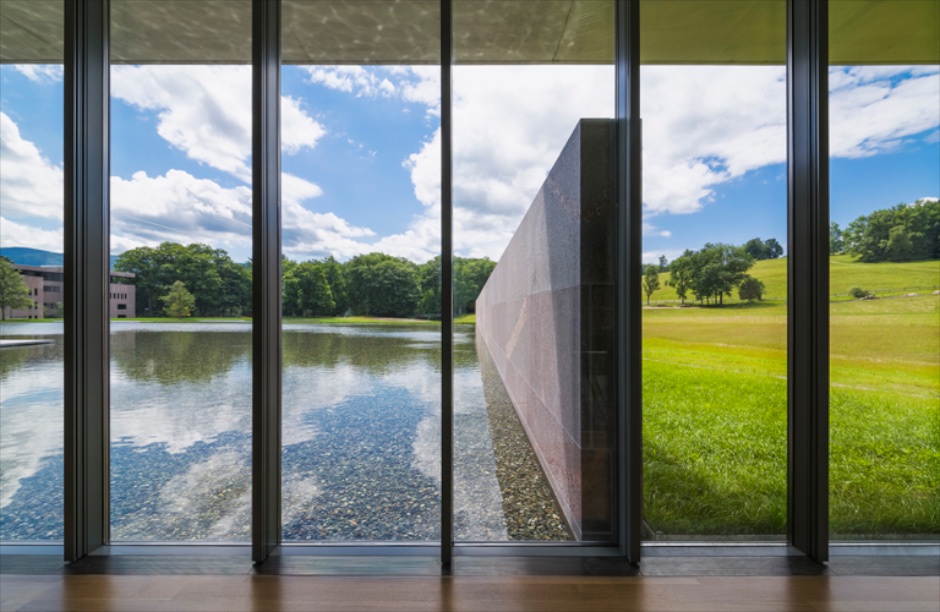
Clark Art Institute, Visitor Center, Location: Williamstown MA, Architect: Tadao Ando
View of reflecting pool and Stone Hill from the West Pavilion.

Clark Art Institute, Visitor Center, Location: Williamstown MA, Architect: Tadao Ando
Clark Center lower level reflecting pool.
———————————————————————-
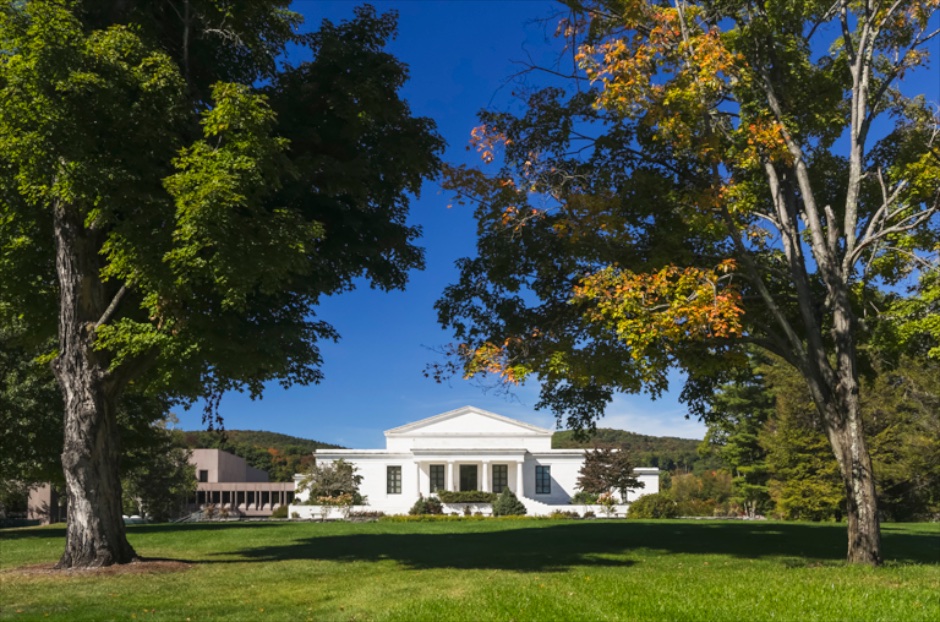
Clark Art Institute: Museum Renovation, Location: Williamstown MA, Architect: Selldorf Architects
Museum Building
Selldorf Architects’ renovation of the Clark’s original Museum Building adds more than 2,200 square feet of new gallery space, a fifteen percent increase that creates a total of 17,700 square feet of space for display of the permanent collection. The new design maintains the original domestic character of the building, with views of the adjacent landscape and natural light that come in from both side windows and skylights. Selldorf’s adaptation of former office and storage areas into new galleries enables the Clark to present more of its collection in originally scaled galleries. Circulation has been greatly enhanced in the renovation by reorienting the building to its original east-west axis and creating a new ease of access to perimeter galleries. Selldorf worked closely with the Clark’s curatorial team on the selection of wall colors and finishes for the reinstalled galleries and created elegant new casework and vitrines for the decorative arts collection along with custom-designed furniture. New environmental systems and lighting work together to bring the building to the highest museum standards.
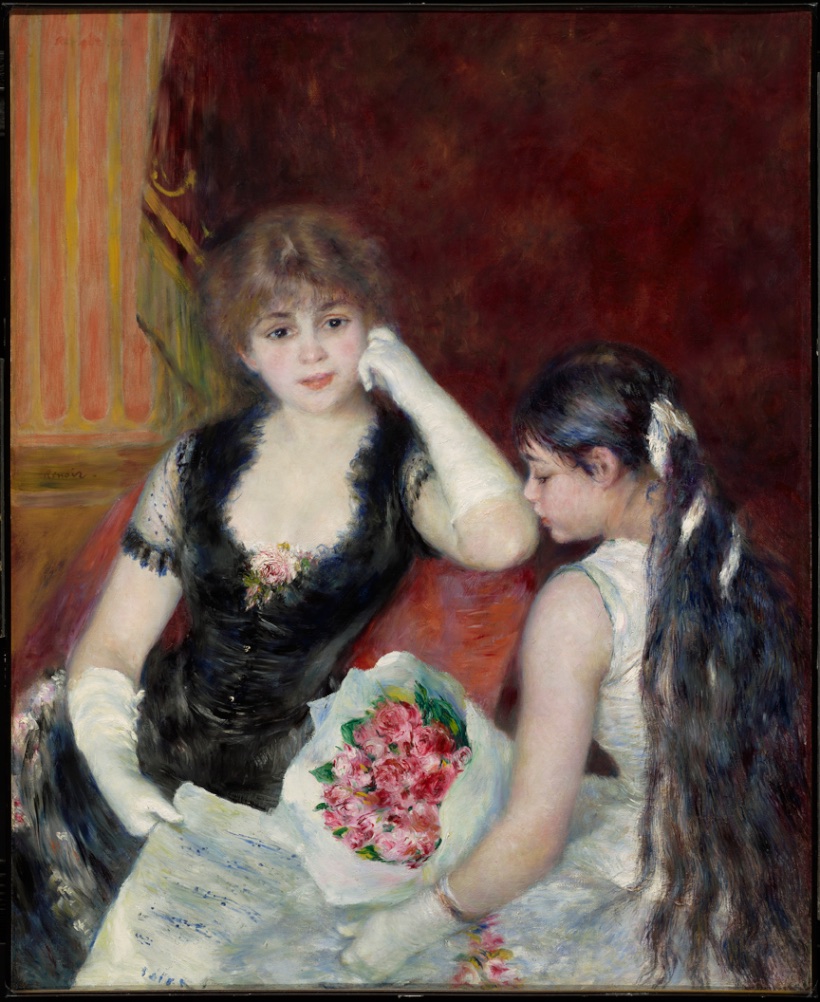 Pierre-Auguste Renoir (French, 1841–1919), A Box at the Theater (At the Concert), 1880. Oil on canvas, 99.4 x 80.7 cm. The Clark, 1955.594
Pierre-Auguste Renoir (French, 1841–1919), A Box at the Theater (At the Concert), 1880. Oil on canvas, 99.4 x 80.7 cm. The Clark, 1955.594
The Clark’s collection of eighteenth- and nineteenth-century French art, includes more than thirty paintings by Pierre-Auguste Renoir, as well as works by Claude Monet, Edgar Degas, and Camille Pissarro.
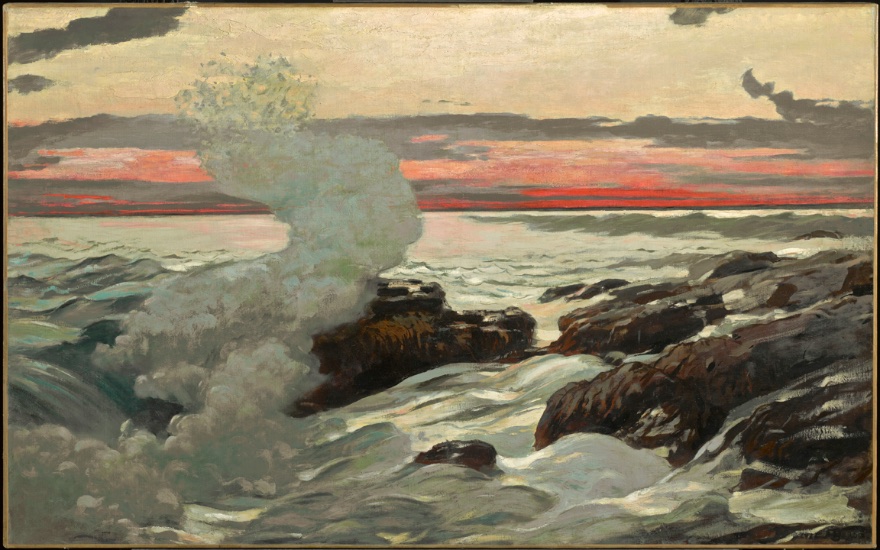 Winslow Homer (American, 1836–1910), West Point, Prout’s Neck, 1900. Oil on canvas, 76.4 x 122.2 cm. The Clark, 1955.7
Winslow Homer (American, 1836–1910), West Point, Prout’s Neck, 1900. Oil on canvas, 76.4 x 122.2 cm. The Clark, 1955.7
The Clark’s holdings of American paintings includes works by John Singer Sargent, George Inness, Frederic Remington and one of the world’s most important collections of Winslow Homer.
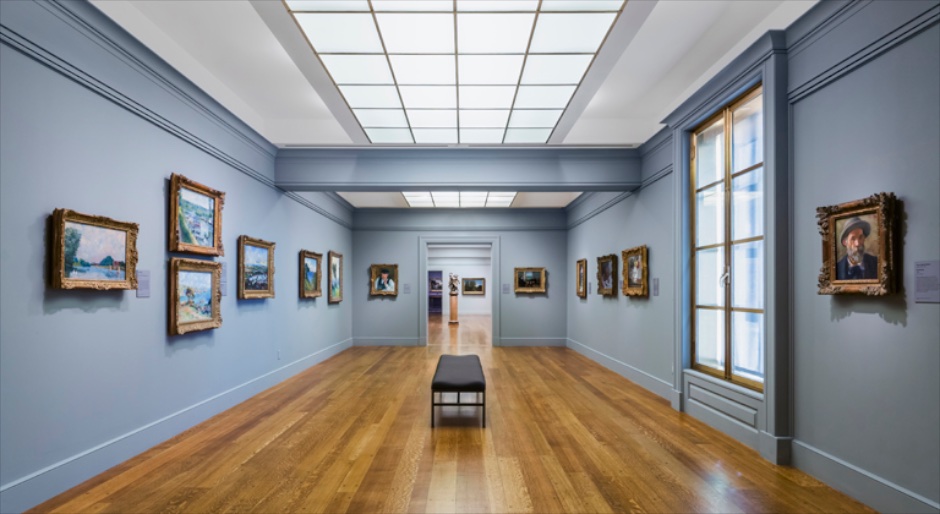
Clark Art Institute, Museum Renovation, Location: Williamstown MA, Architect: Selldorf Architects

European & American Art, 1850 / 1900.
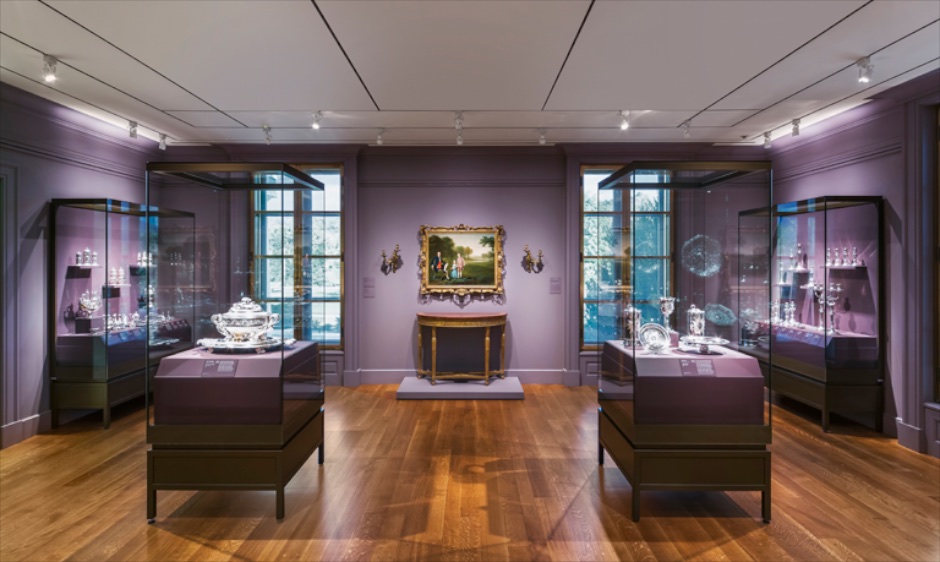
Clark Art Institute, Museum Renovation, Location: Williamstown MA, Architect: Selldorf Architects
Newly renovated decorative arts gallery at the Clark.
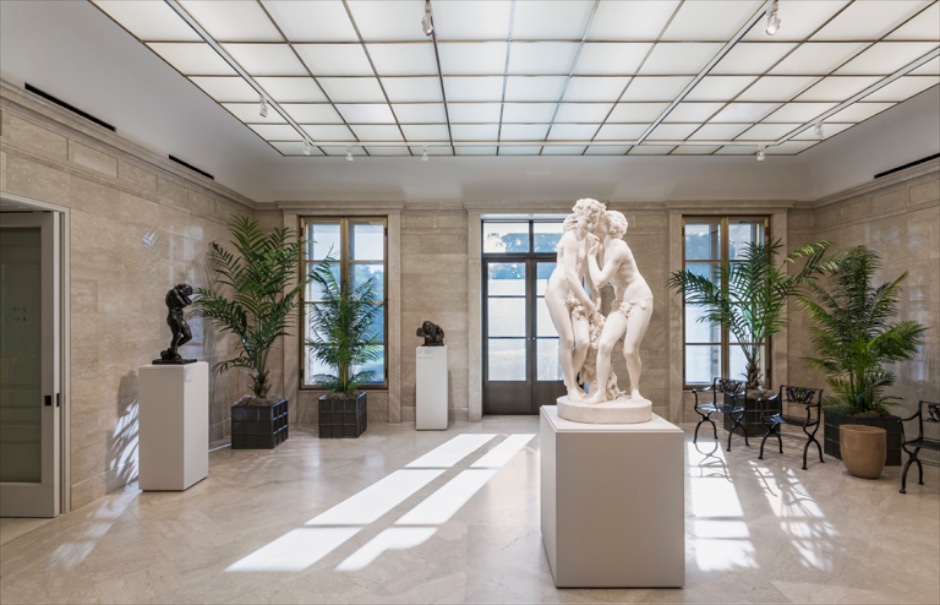
Clark Art Institute, Museum Renovation, Location: Williamstown MA, Architect: Selldorf Architects
The Clark’s recent renovation includes a new sculpture gallery.
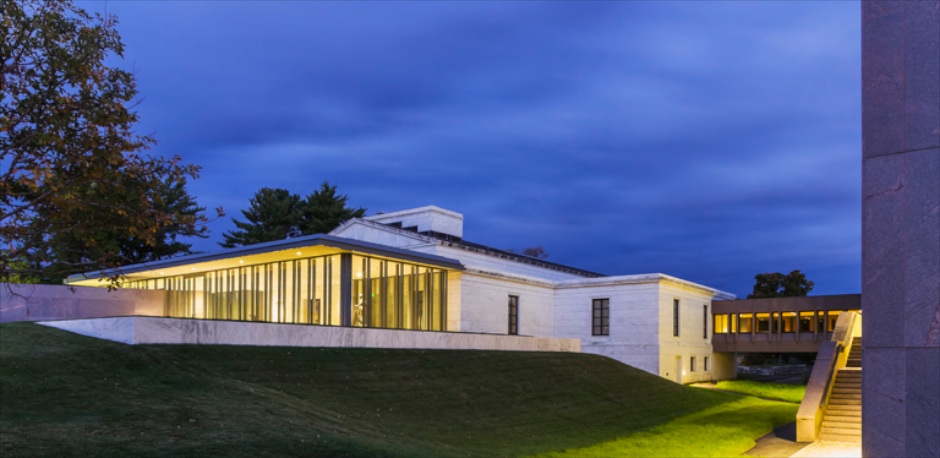
Clark Art Institute, Visitor Center, Location: Williamstown MA, Architect: Tadao Ando
Museum Pavilion.
———————————————————————-
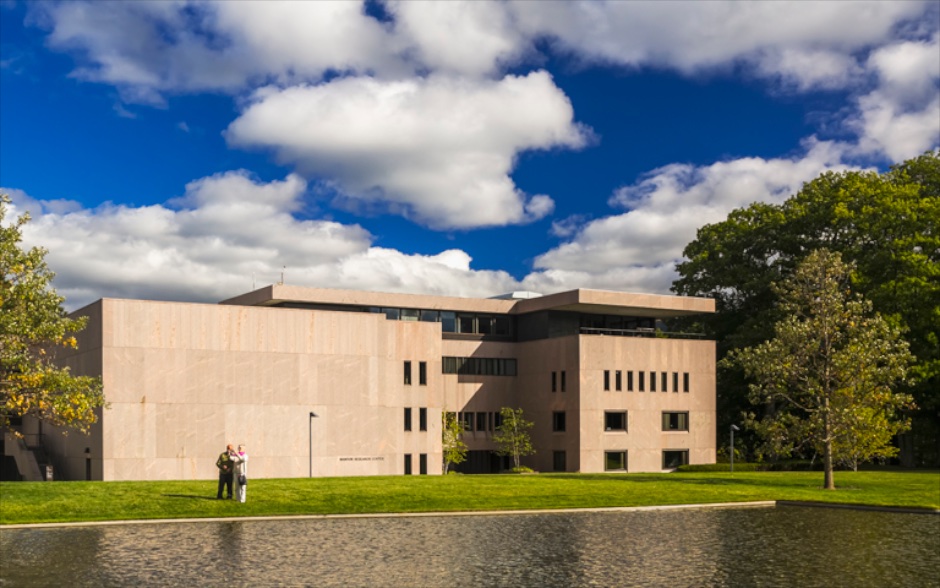
Clark Art Institute: Manton Research Center, Location: Williamstown MA, Architect: Cambridg5
Manton Research Center
Selldorf’s design for the renovation of the Manton Research Center—a 1973 building designed by Pietro Belluschi with The Architects Collaborative—reinforces the building’s purpose as a center for research and academic activities, and as home to both the Williams College Graduate Program in the History of Art and one of the largest art history research libraries in the country. A key element of the ongoing renovation is the transformation of the former visitor services courtyard to a new reading room, bringing the public closer to the study of art. Selldorf has designed a new Manton Study Center for Works on Paper on the main level with an adjacent gallery for regular exhibitions of the Clark’s prints, drawings, and photography collection, as well as a gallery space dedicated to the Manton Collection of British Art. Other highlights include a new bookstore and coffee bar.
“By distilling the essential character of these two buildings with very different architectural vocabularies, we are able to create a wholly revamped and refreshed Museum and Manton Research Center. The design changes may appear subtle to some, but required precision and restraint at all times. The result will better serve the Clark’s dual mission and enhance the visitor experience of the permanent collection.” — Annabelle Selldorf, principal of Selldorf Architects
~~~~~~~~~~~~~~~~~~~~~~~~~~~~~~~~~~~~~~~~~~~~~
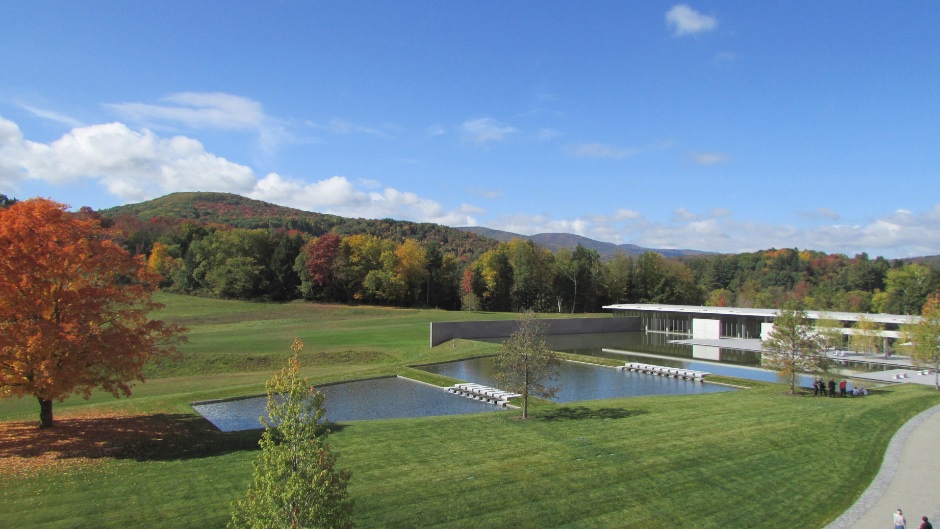
Photo by Tucker Bair courtesy of The Clark Art Institute.
THE CLARK’S LANDSCAPE
Reed Hilderbrand Landscape Architecture, led by principal Gary Hilderbrand, worked in close collaboration with Tadao Ando to articulate a dramatic new landscape design for the Clark that achieves new levels of environmental sustainability and creates an exceptional visitor experience. The unifying element of the landscape is the tiered reflecting pool that is the focal point of the new main campus and unites the three surrounding buildings with the natural setting. The reflecting pool is at the heart of an integrated hydrology program that significantly reduces the Clark’s consumption of natural resources and enhances its land management practices.
The Clark Center terraces overlook the uppermost pool, which reflects views of wetlands and woodland. The entirety of the pools link the cultivated lawns of the central campus with the pastures of the Stone Hill meadow and the intricate network of streams that define the site’s drainage systems and shape its habitat. Lawn walks and embankments thread between the pools. Water cascades through granite weirs from one pool to the next and then is recycled through a system that integrates rainfall capture, stormwater management, landscape irrigation, and building systems, including climate control.
“Our design for the final phase of the campus brings the landscape into exemplary alignment with the Clark’s commitment to stewardship. The beauty of the reflecting pool and surrounding lands is certainly important, but we’re extremely satisfied with the knowledge that we have evolved, over the last ten years, a complex landscape that reflects its cultural roots in the Northern Berkshires and amplifies the natural processes that shape its topographic and spatial beauty.” — Gary Hilderbrand, Reed Hilderbrand Landscape Architects.
The Clark Center aims to achieve LEED – New Construction Silver Certification from the United States Building Council (USGBC). Funding for this project has been provided by the Massachusetts Cultural Facilities Fund: a program of the Commonwealth of Massachusetts, administered through a collaborative arrangement between MassDevelopment and the Massachusetts Cultural Council..

Sterling and Francine Clark Art Institute
The Lunder Center at Stone Hill. Photo by K. Kennefick courtesy of The Clark Art Institute.

Surrounded by 140 acres of expansive lawns, meadows, and walking trails, the Clark is located in a setting of profound natural beauty. The windows of its galleries afford views of the surrounding woods and fields, adjacent farm pastures, and a nearby lily pond. Walking trails traverse the property, including trails up historic Stone Hill, which offers a spectacular view of Williamstown and the Green Mountains of Vermont to the north.
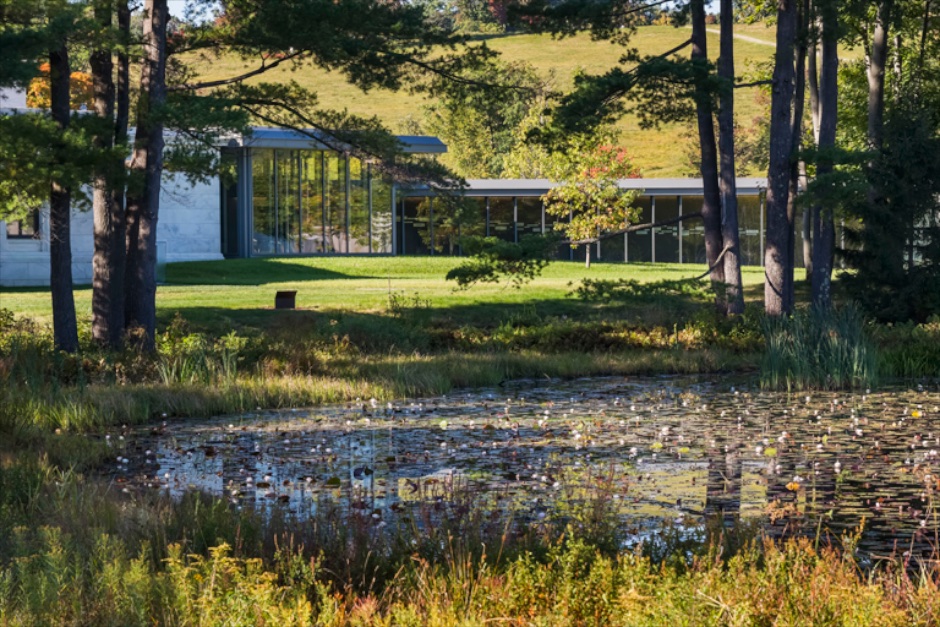
Clark Art Institute, Visitor Center, Location: Williamstown MA, Architect: Tadao Ando
Schow Pond
~~~~~~~~~~~~~~~~~~~~~~~~~~~~~~~~~~~~~~~~~~~~~

Photo by Tucker Bair courtesy of The Clark Art Institute.
THOMAS SCHUTTE, CRYSTAL, 2015
Contemporary artist Thomas Schutte’s first full-scale architectural art installation in the United States, Thomas Schutte: Crystal, opened at the Clark Art Institute on June 14, 2015. Schutte arrived at the unusual asymmetrical shape of Crystal, which was conceived specifically for its location on the Clark’s Stone Hill trails, by imagining a small piece of crystal scaled up to architectural proportions. The structure’s interior is clad in wood, referencing the traditional materials of rural vernacular architecture; the exterior is zinc-coated copper, a modern material representing contemporary means and methods.
Crystal provides visitors the opportunity to reflect on how landscapes and places, including the Clark’s campus, are constructed and preserved. The work’s unusual design does not clearly communicate its purpose, allowing visitors to construct their own meanings and functions for the structure and site.
~~~~~~~~~~~~~~~~~~~~~~~~~~~~~~~~~~~~~~~~~~~~~
The Clark Art Institute, located in the Berkshires of western Massachusetts, is one of a small number of institutions globally that is both an art museum and a center for research, critical discussion, and higher education in the visual arts.
Opened in 1955, the Clark houses exceptional European and American paintings and sculpture, extensive collections of master prints and drawings, English silver, and early photography. Acting as convener through its Research and Academic Program, the Clark gathers an international community of scholars to participate in a lively program of conferences, colloquia, and workshops on topics of vital importance to the visual arts. The Clark library (closed to the public during renovation) is one of the nation’s premier art history libraries, with more than 240,000 volumes. The Clark also houses and co-sponsors the Williams College Graduate Program in the History of Art.
—————————-
Francine & Sterling Clark
The Clark Art Institute has a rich, colorful history beginning with founder Sterling Clark’s expedition to China in 1908, his introduction to the world of collecting art in Paris in 1910, and his marriage to Francine Clary in 1919. Together, Sterling and Francine began what is now a world-renowned collection of American and European art, including prints and drawings, sculpture, decorative arts, and paintings—most notably French Impressionist masterworks by artists such as Pierre-Auguste Renoir, Edgar Degas, Édouard Manet, Claude Monet, Berthe Morisot, and Camille Pissarro. They also committed to the pivotal concept of serving as not only an art museum, but also a research and academic center. The Clark’s Research and Academic Program is now considered one of the finest of its kind, awarding prestigious fellowships to established art historians and boasting a library of more than 230,000 volumes. — Clark Art Institute website.
—————————-
The Clark is located at 225 South Street in Williamstown, Massachusetts. Galleries are open Tuesday through Sunday, 10 am to 5 pm, and open daily in July and August. Admission is $20; free year-round for Clark members, children 18 and younger, and students with valid ID.
www.clarkart.edu
—————————-
Copy & all photos courtesy Clark Art Institute. Photos by ©Jeff Goldberg/Esto, unless otherwise noted.
~~~~~~~~~~~~~~~~~~~~~~~~~~~~
Visit these AAQ Museum Architecture Portfolios (links)
Glenstone, Potomac, Maryland / 2006 – 2008
Harvard Art Museums, Cambridge / 2014
MAD — Museum of Arts and Design, NYC / 2016
Parrish Art Museum, Water Mill, NY / 2012
The Morgan Library & Museum, NYC / 2006
Wadsworth Atheneum Museum of Art, Hartford / 2017
Whitney Museum of American Art, NYC / 2015
Yale University Art Gallery, New Haven / 2012
_______________________________________________
